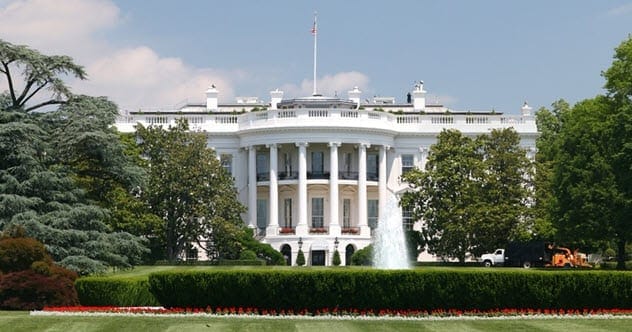Imagine holding one of the toughest jobs on the planet – President of the United States. You’re on call 24/7, making huge decisions that affect millions. We’ve all seen how the stress can age a president; remember Barack Obama’s gray hairs? But what happens when their time in the White House is up? Do they finally get to kick back and relax, or does life stay just as intense? Let’s dive into 10 fascinating truths about what daily life is really like for former U.S. presidents after they hand over the keys to the Oval Office.
10 Wind Down And Chill Out (If You Can)
After years of non-stop meetings, world leader calls, and constant media attention, the sudden quiet can be a real jolt for former presidents. When Barack Obama left office, he admitted to feeling a bit lost at first. He enjoyed simple things like sleeping in and just “puttering around the house,” even struggling, like Michelle, for closet space and figuring out the coffee maker.
Bill Clinton had a similar experience. After his time as Arkansas’ governor and then eight years as president, he was surprised to wake up and find breakfast wasn’t automatically ready. He had to learn to make his own coffee again! George W. Bush, however, seemed to adjust a bit more smoothly. While the initial change was jarring, he soon found peace on his Texas ranch. He even discovered a new passion: painting. Today, he’s quite an accomplished artist and even published a book of his work called Portraits of Courage.
9 Collect That Check… Forever!
Being president is the highest job in U.S. politics. So, what happens financially after leaving office? Former leaders are well compensated. Presidential pensions are quite generous. But it wasn’t always this way. When Harry S. Truman left office in 1953, his only income was a small military pension of about $112 a month.
Politicians worried that this lack of financial support could make former presidents vulnerable. So, in 1958, Congress passed the Former Presidents Act. This law gives ex-presidents a lifetime pension, staff, medical care, and other benefits. Today, that pension is over $200,000 a year. They can also ask for more money for expenses to keep up the “dignity” of the office. This means no ex-president needs to worry about money. However, this pension sometimes causes debate, as many ex-presidents earn millions from book deals and speaking tours. Some wonder if the pension is still necessary, but for now, it continues.
8 Secret Service Staffers Stick Around
Once you’ve been the U.S. president, you can never truly be anonymous again. Former presidents are recognized everywhere. Plus, the secret information they know makes them potential targets. That’s why the Secret Service sticks around. Former presidents, their spouses, and their children (until they are of age) get lifetime protection from these dedicated agents.
Interestingly, this lifetime protection wasn’t always standard. In 1994, Congress limited this protection to just ten years after leaving office. The idea was that ex-presidents could pay for their own security after that. But the terrorist attacks of September 11, 2011, changed this thinking. By 2013, lifetime security for former presidents and their families was fully reinstated. Still, not everyone wants it. Richard Nixon, for example, chose to give up his Secret Service protection in 1985, eleven years after resigning, and lived his final years without it.
7 All the Health Care You Can Handle
Along with pensions, former presidents get lifetime health care. Just like members of Congress, their medical needs are covered. However, the amount of coverage can vary. For instance, George H.W. Bush and Jimmy Carter, both one-term presidents, received their federal health benefits through the General Services Administration (GSA).
On the other hand, two-term presidents like Bill Clinton, George W. Bush, and Barack Obama qualify for notably more in yearly health funds. Their longer service in the White House means they get more insurance benefits. But this doesn’t mean one-termers are left out; Jimmy Carter’s care is still covered as he lives his long life. Some former presidents don’t even use all the benefits offered. The elder Bush qualified for more healthcare money due to his time as Vice President but chose to decline those extra benefits later in life. With their considerable net worth, some may not need every federal dollar, but the medical safety net is always there.
6 Hope You Don’t Like Driving!
Life as a former president comes with many perks, but also some surprising limitations. For example, once someone becomes president, they’ll likely never drive a car on a public road again. George W. Bush once mentioned it had been decades since he drove on a highway, though he still drives his pickup on his Texas ranch.
Why this rule? It’s all about safety and security. The risks are just too high. With lifetime Secret Service protection, agents can do the driving. In fact, no president has driven themselves on a public road since Lyndon B. Johnson in the 1960s. This no-driving rule isn’t an official law, but it’s a very strong recommendation from the Secret Service that all presidents and vice presidents have followed since LBJ. Not everyone likes it, though. Bill Clinton called it one of the biggest downsides of his public service. Joe Biden also dislikes it, saying when he was Vice President that not driving was “the one thing I hate about this job.” At least they can still drive golf carts on private property!
5 Private Life? What Private Life?
It’s probably no shock that ex-presidents are always in demand. Public attention doesn’t stop when they leave office; it’s a lifelong thing. And it’s not just local news – international media follows them closely. They never get to be truly anonymous again. Living under this constant microscope is tough, much like being a Hollywood star, but with the added weight of past political decisions.
Consider Ronald Reagan. He left office very popular in 1989. But years later, some of his economic policies faced heavy criticism. Bill Clinton experienced something similar. His tough stance on crime was popular in the 1990s, during his prosperous two terms. But by the 2010s, views had changed, and he was criticized for contributing to mass incarceration. He even apologized for his earlier crime policies. This is part of the job – leaders make policies, and the public lives with the results. Facing criticism decades later is just one of the unique frustrations of being a retired president.
4 Don’t Call out the Next Guy
Former presidents live by many unwritten rules, like the driving ban. One of the biggest is about their successors: they’re generally not supposed to criticize the current president. The idea is that ex-presidents had their chance to lead, the people voted, and it’s time to let the new leader do their job without interference. This is more of a social custom than a strict rule, but most former presidents have taken it seriously.
This tradition saw a bit of a shift after Donald Trump’s election in 2016. It wasn’t just one party criticizing another; both Barack Obama and George W. Bush, from different parties, voiced sharp criticisms of Trump’s policies during his term. Interestingly, even when they did criticize, they often avoided using Trump’s name directly. This shows how strong the “no criticism” custom is. While it might seem undignified by some for former leaders to critique a sitting president, they try to uphold this tradition as much as possible.
3 It’s An Extremely Exclusive Club
The presidency is an incredibly tough job, filled with daily life-or-death decisions and intense scrutiny. Because so few people have experienced it, former presidents often form unique bonds with each other. They don’t have many others who can truly understand what they’ve been through. This shared experience can lead to surprising friendships.
For example, despite their different political parties, Bill Clinton and George W. Bush became close friends after their presidencies. They often vacation together, and Bush has even jokingly called Clinton his “brother from another mother.” When living ex-presidents gather at public events, it’s always a noteworthy occasion. In 2017, Bush, Clinton, and Obama appeared together at a golf tournament. Later that year, those three, along with Jimmy Carter and George H.W. Bush, united to raise funds for hurricane relief. Seeing five ex-presidents in one room is rare and powerful. After their terms, political battles fade, and they often find common ground, bonded by one of the world’s most exclusive experiences.
2 There’s Nothing But Time, So Why Not Write
One thing nearly every former president does is write a memoir. This tradition goes back over 150 years. James Buchanan was the first to release a modern-style memoir after leaving office in 1861, though it wasn’t well-received. Things picked up in 1885 when Mark Twain published Ulysses S. Grant’s presidential memoir, which became a huge success. Grant’s writing was so good that many historians think Twain ghostwrote it.
Today, publishers eagerly await presidential memoirs. After Barack Obama left office, there was a bidding war for his story. Penguin Random House won with a staggering $65 million offer for both his and Michelle’s memoirs. Obama’s historic presidency certainly played a role, but writing a memoir has become a standard and often very profitable move for all ex-presidents. It’s a way to share their White House experiences and secure a significant income after their federal service.
1 And Put the Book in Your Own Personal Library!
Besides writing a memoir, there’s another major project for every outgoing president: creating their presidential library. These “presidential centers” are like museums dedicated to their time in office. They give the public a chance to learn about their legacy and are often located in the president’s hometown, filled with keepsakes and important documents. Some, like Richard Nixon’s library in Yorba Linda, California, even host private events like weddings!
These libraries also serve a vital historical purpose. In 1939, Franklin D. Roosevelt decided all his records would go to the federal government. He was worried about important documents being lost, a problem dating back to George Washington, whose papers were damaged by water and rats in his Mount Vernon basement. It wasn’t until 1978 that it became official policy for presidents to turn over their records after leaving office. These records are preserved in their presidential libraries, safeguarding the nation’s history and forming a lasting part of each president’s legacy.
Life after the Oval Office is a unique blend of newfound freedom and lasting responsibilities. From adjusting to quiet days to managing a public legacy, former U.S. presidents navigate a world few can truly understand. It’s a journey of transition, reflection, and often, continued service, albeit in a very different way.
What surprised you most about the life of former presidents? Share your thoughts in the comments below!










